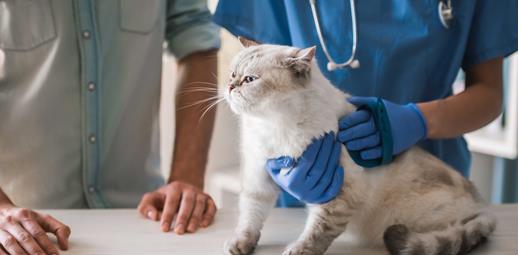
A missing pet is every pet owner’s worst nightmare. But, if they have a microchip, your chances of getting them back are much higher.
Here we explain how microchipping works for dogs and cats, how much it costs, and why you should think about getting your pet chipped, if you haven’t already.
How does it work?
Even if your pet is wearing a collar, it can easily be removed or lost. But, if they’re microchipped, then the chip can be scanned, and they can be reunited with you.
Each chip has a unique reference code and the details of the owner are kept on a central database, so they can easily be located.
There are a number of these databases in the UK including: Identibase, Pet Identity UK, Petlog, PetScanner and Chipworks.
If your pet has gone missing, contact the microchip company as soon as possible and let them know. It’s also worth checking your details are up to date at the same time, so they can contact you straight away if your pet is found and scanned.
Do I have to get my pet microchipped?
Since 2016, all dogs aged eight weeks and over need to be microchipped by law. If they don’t have a microchip and they’re scanned by a dog warden, then the owner could face a fine of up to £500.
Other pets such as cats or rabbits do not legally have to be microchipped, but many owners choose to do it anyway, in case their pet goes missing.
Will my pet feel any pain when they’re microchipped?
Microchips are very small and inserted just under the skin on the back of an animal’s neck.
The procedure usually only lasts a few seconds and is similar to having an injection – most pets don’t even notice it being done.
Once the chip has been inserted, if your pet has any adverse reactions, speak to your vet straight away.
Where do I get my pet microchipped?
You can get your pet microchipped by their vet. Many rehoming centres and pet charities also provide the service.
Make sure the person doing the microchipping is fully qualified and trained in inserting the chip.
How much will it cost?
The cost varies depending on where you’re having your pet microchipped. According to the Blue Cross, it usually costs between £10 to £15.
Charities sometimes run special offers, providing microchipping for free or a discounted rate, so it’s worth keeping an eye out for these deals in your local area.
Vet charity PDSA also offers free microchipping to pet owners receiving certain benefits.
How long does the chip last for?
Microchips are designed to last for a pet’s lifetime.
If there is a change of ownership, the chip remains in the pet and the new owner must add their details to the database.
Similarly, if your details change at any point – for instance, if you move home or change your phone number – you’ll need to update the database.


